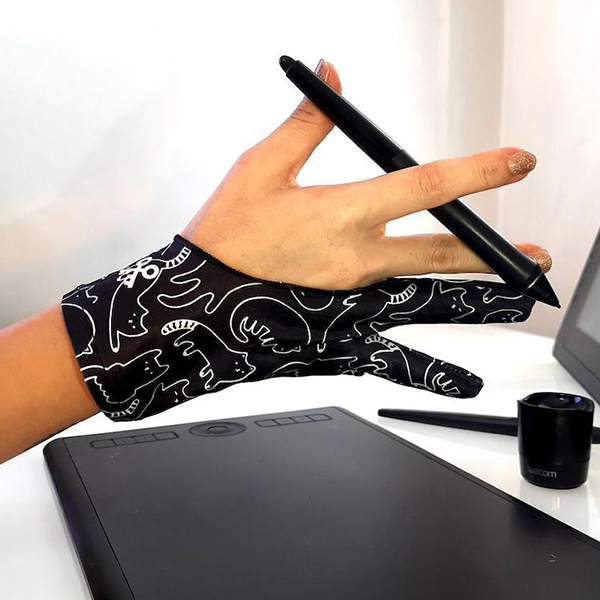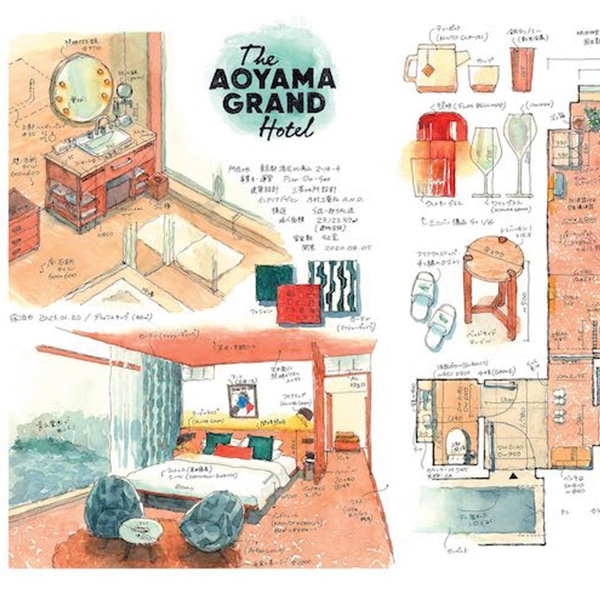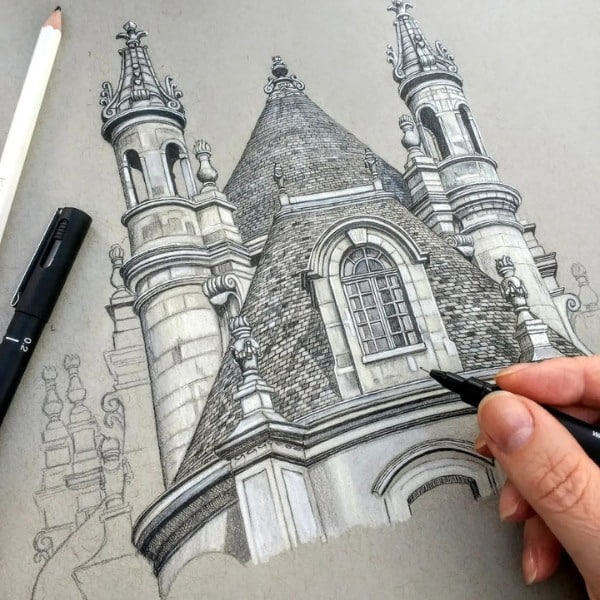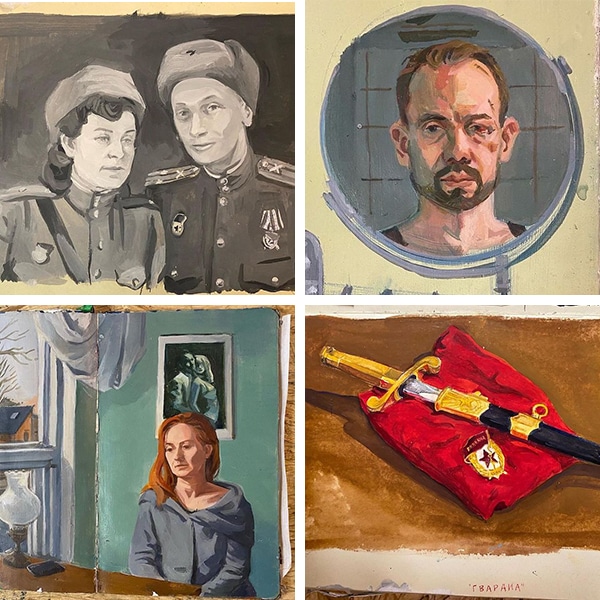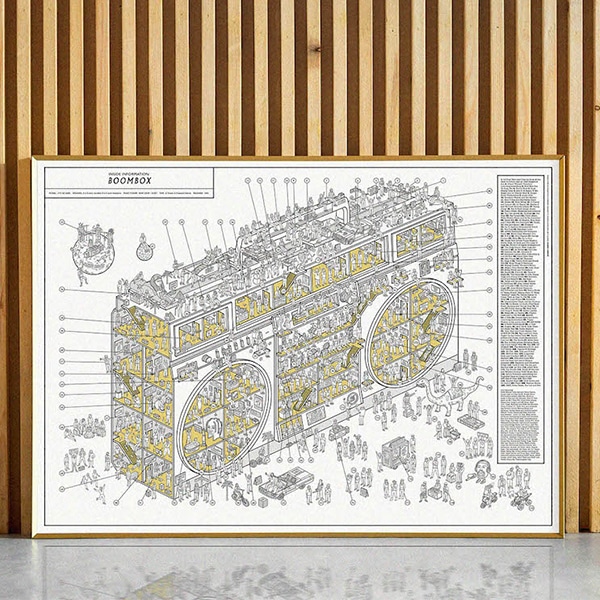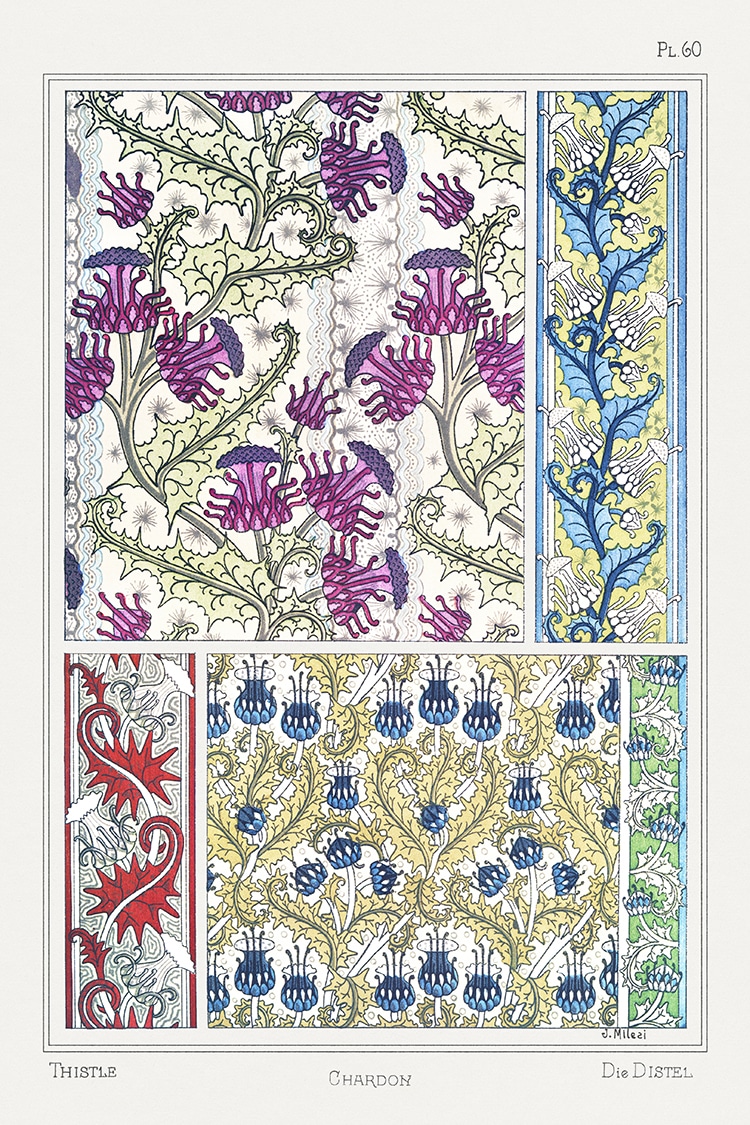
Chardon (thistle) from Eugène Grasset's “La Plante et ses Applications Ornementales” (1896). (Photo: Original from the The New York Public Library. Digitally enhanced by rawpixel [CC0])
The two dozen plants chosen by Grasset include the dandelion, iris, and wild geranium. Every bloom is represented in three ways. The first picture shows the natural rendering of each plant from multiple angles. The other two images give examples of stylized designs incorporating the flower. This three-part method of presenting illustrations demonstrates Grasset's philosophy of drawing. “The art of drawing is not the art of observing forms and objects alone, it is not mere mimicry of these objects; it is the art of knowing how far and wherein, and with what just limitations, those forms and objects can be reproduced in a picture, or in a decorative work,” he wrote.
As an art teacher in Paris, Grasset's book was an educational aid. His original intended audience was other artists who wished to incorporate floral motifs into their own work. Grasset's students—including the Art Deco poster designer Maurice Pillard Verneuil—became well-known for their work in stained glass, jewelry, posters, and other decorative arts.
Grasset's designs are now available for modern artists to consult via digitization on the New York Public Library website. You can read the original book La Plante et Ses Applications Ornementales here and get lost in the intricate whimsy of Art Nouveau.
La Plante et Ses Applications Ornementales (The Plant and Its Ornamental Applications) is an 1896 book by Eugène Grasset, a Swiss designer and art instructor living in Paris.
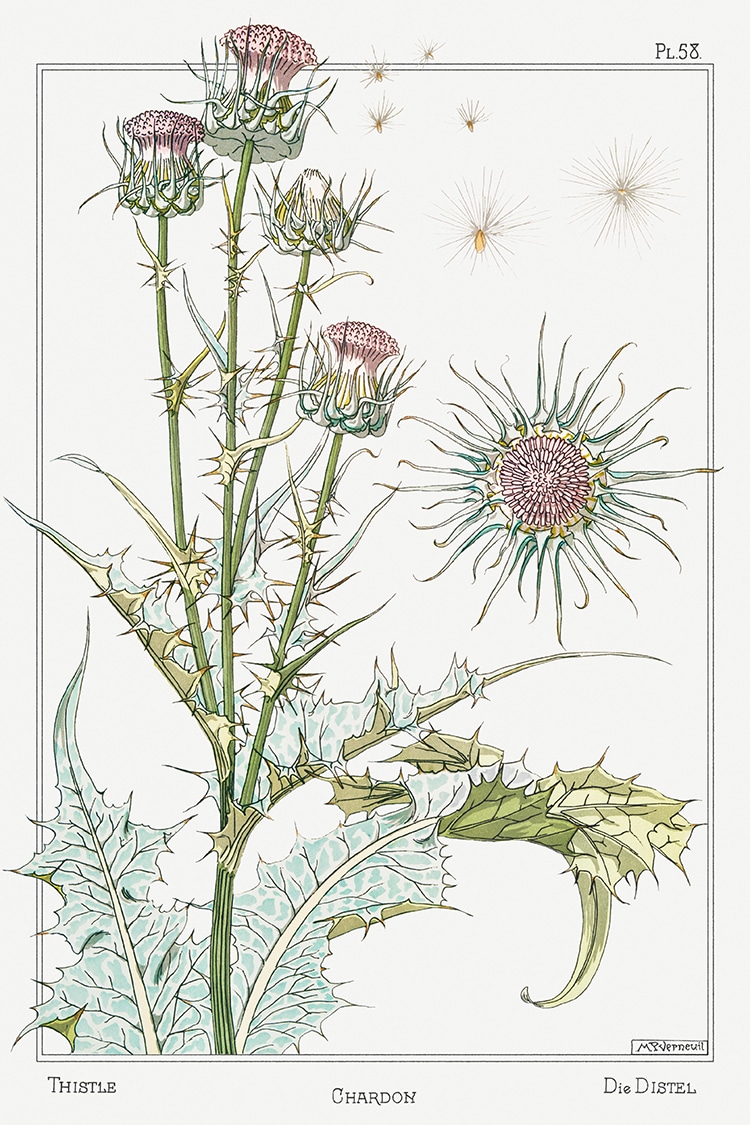
The realistic plate of chardon (thistle) from Eugène Grasse's “La Plante et ses Applications Ornementales” (1896). (Photo: Original from the The New York Public Library. Digitally enhanced by rawpixel [CC0])
The book is an important milestone in the development of the Art Nouveau style at the end of the 19th century. Art Nouveau used new organic forms and designs, especially in the decorative arts.
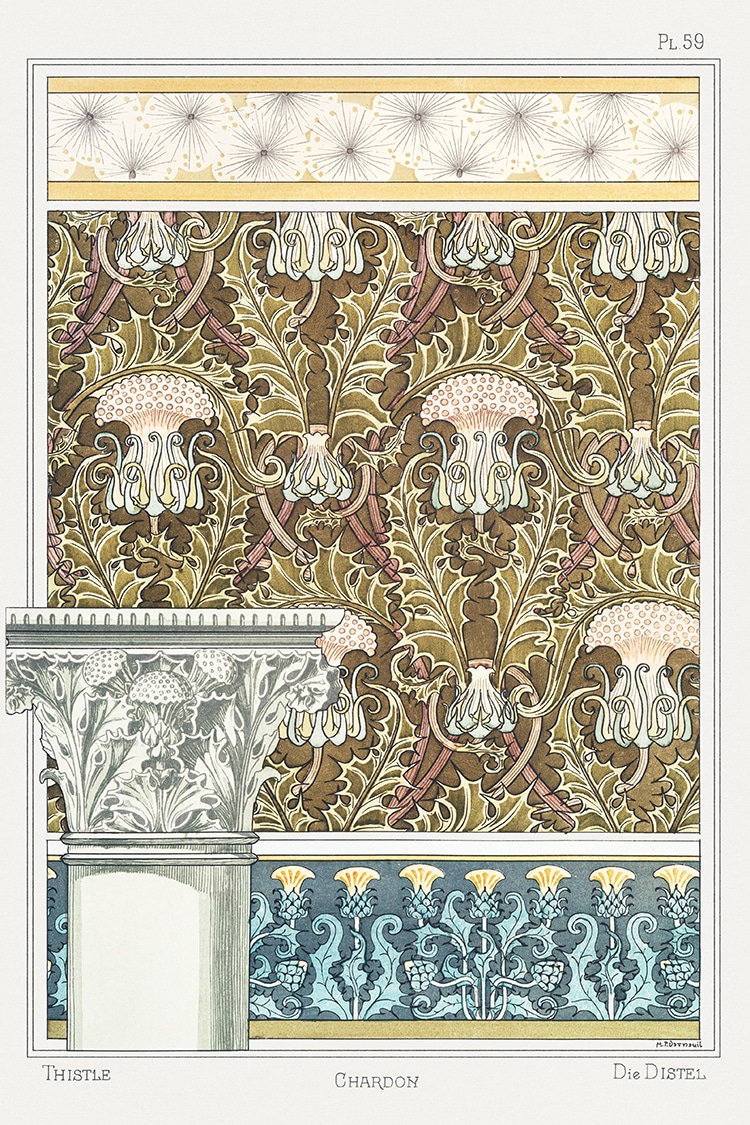
Art Nouveau illustration showing a column with chardon (thistle) design. (Photo: Original from the The New York Public Library. Digitally enhanced by rawpixel [CC0])
Grasset's book was illustrated by his students and includes 24 different plants.
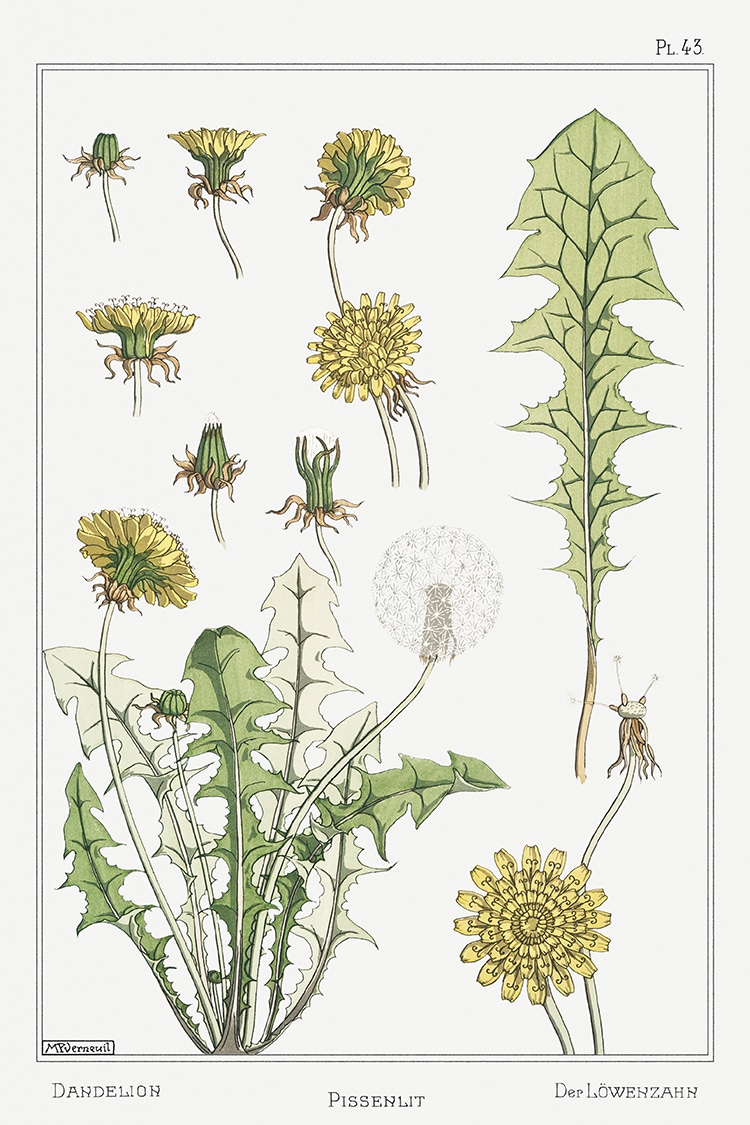
Drawing of pissenlit (dandelion). (Photo: Original from the The New York Public Library. Digitally enhanced by rawpixel [CC0])
Each plant is drawn realistically, followed by two plates with stylized design examples.

Abstractions of pissenlit (dandelion). (Photo: Original from the The New York Public Library. Digitally enhanced by rawpixel [CC0])
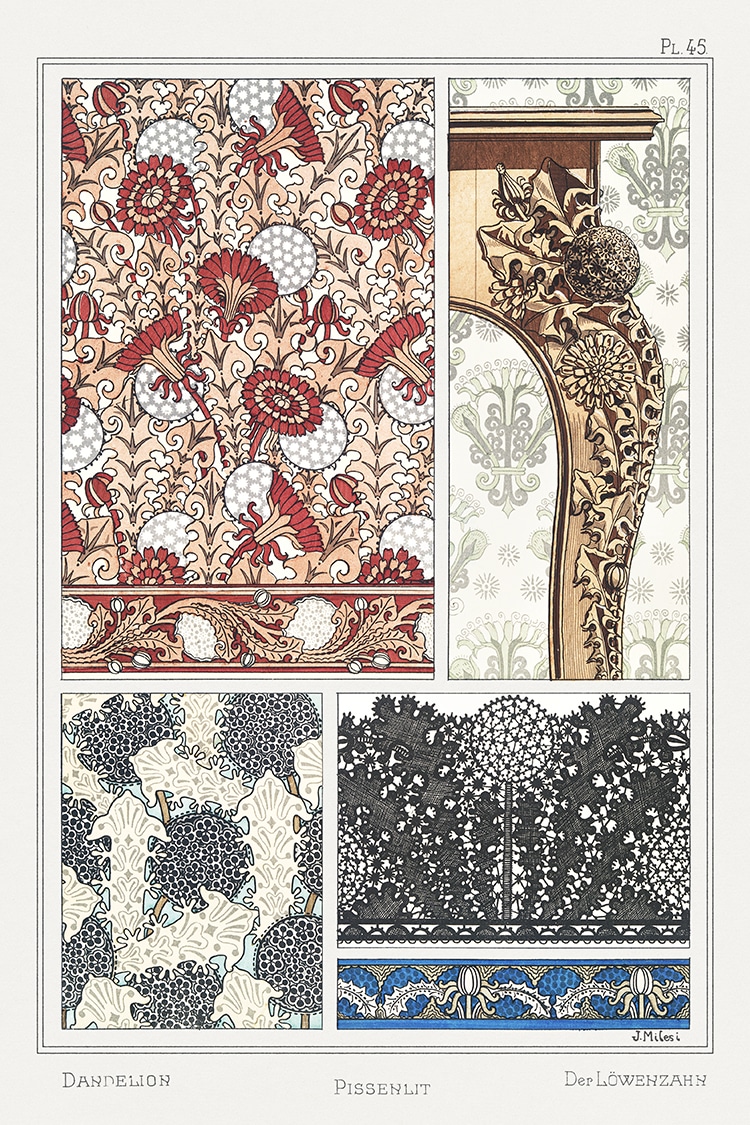
Grasset presented examples of how to incorporate his floral designs into furniture. (Photo: Original from the The New York Public Library. Digitally enhanced by rawpixel [CC0])
The book was a teaching tool, and other artists could reference Grasset's designs for their own work.
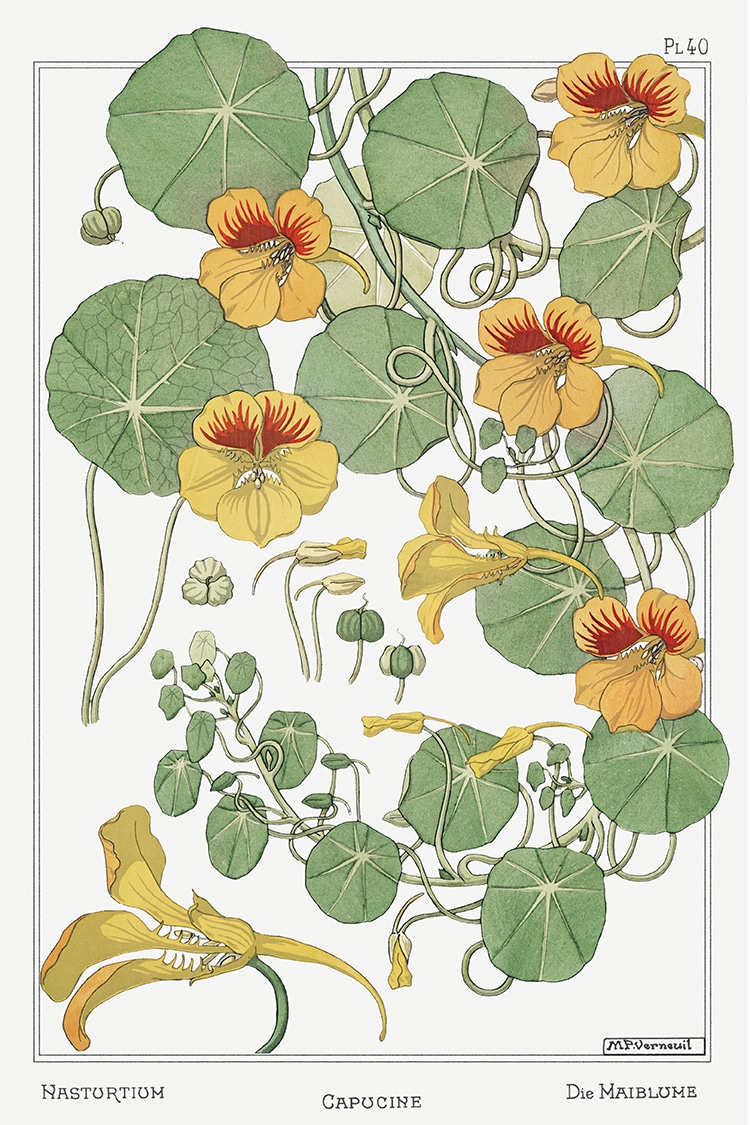
A realistic depiction of capucine (nasturtium). (Photo: Original from the The New York Public Library. Digitally enhanced by rawpixel [CC0])
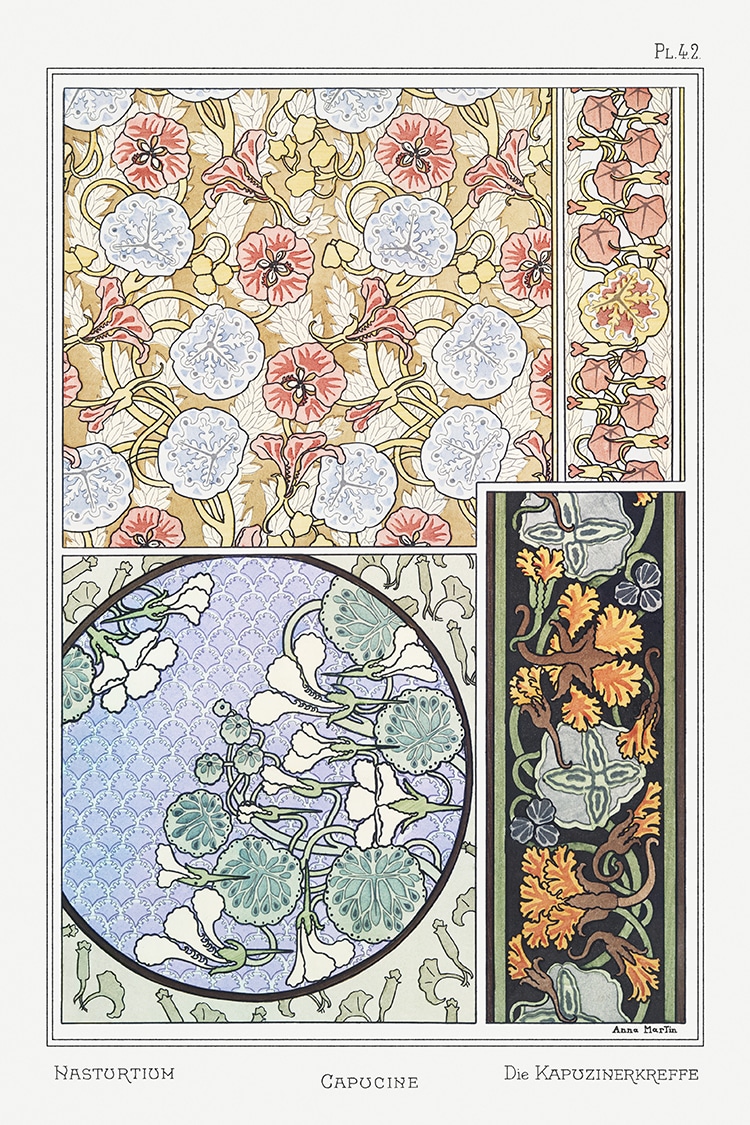
Designs incorporating capucine (nasturtium). (Photo: Original from the The New York Public Library. Digitally enhanced by rawpixel [CC0])
Related Articles:
Art Nouveau, the Ornate Architectural Style that Defined the Early 20th Century
How Alphonse Mucha’s Sinuous Art Nouveau Posters Elevated Printmaking as an Art Form
The Story Behind Paris’ Iconic Art Nouveau Metro Entrances
Magnificent Art Nouveau Architecture of the Great Antoni Gaudí














































































